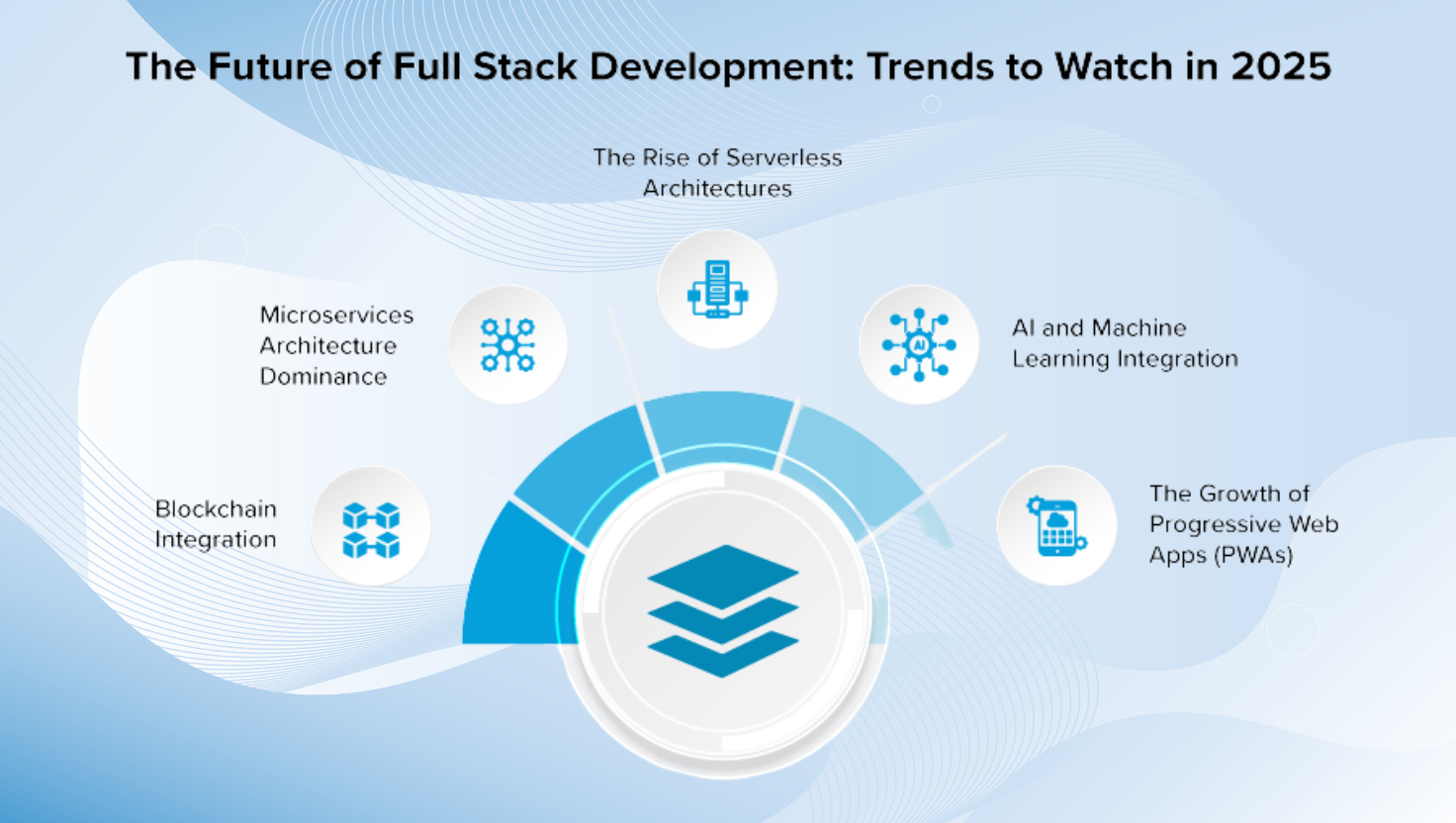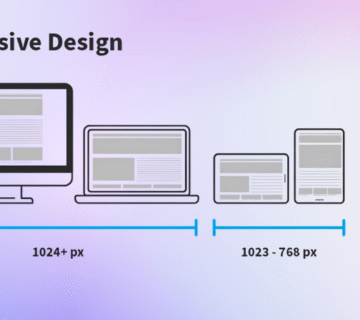The Future of Full Stack Development in 2025 | Key Trends and insights
The key full stack development Trends in 2025. Find out how AI, serverless architecture, PWAs, micro frontend architecture and cloud-native strategies are defining the landscape of the web development profession. Get ahead in your career or business strategies now!
Future of Full Stack Development: Trends to Watch in 2025
The technology landscape is changing rapidly, and full stack development is at the heart of this digital shift. As we progress into 2025, businesses and developers must stay informed about the latest trends that will influence the future of full stack development. Whether you are a developer looking to improve your skills or a business seeking top talent, understanding these trends is important.
What Is Full Stack Development ?
Full stack development encomepasses proficieny in both the front-end (client side) and back-end (server side) of web application Development. A full stack developer does everything from designing application user interfaces to managing databases, APIs, and the server infrastructure.Full stack Engineers are highly Regarded because their broad skill set allow them to handle both frontend (User interface) and backend (server, database) development.
Why Full Stack Development Is Still Relevant ?
In 2025, full stack development is vital because it offers complete solutions, lowers development costs, and boosts collaboration across teams. Companies prefer full stack developers for their flexibility and their ability to manage the entire development process efficiently.
What’s Busy in Full Stack Development in 2025?
1. AI has made coding more efficient.
For example, GitHub Copilot pinpoints errors in your code and provides you suggestions for lines of code. AI will result in an increase of your productivity and decrease your errors!
Why this is a good thing, too:
● You can focus more on doing and writing data and processes.
● You can test ideas in code much faster!
● You will not have to spend so much time troubleshooting bugs.
2. Say Goodbye to Servers?
Many developers working in JavaScript full stack (MERN, Unix, etc) now utilize a serverless approach altogether. They want to avoid the hassle of server maintenance. Cloud Platforms like AWS Lambda optimize for automatic scaling for you.
Benefits:
● Cost effective.
● Easier to manage backends.
● Fully scalable without you having to do anything!
3. PWAs: A Web App that Functions Like an App
PWAs are appealing because they behave like a traditional app on a mobile device. They can operate offline and send push notifications to users.
SEO Tip:
● When users enjoy your App, they will stay longer.
● When your app loads quickly, Google ranks your app better.
● They can function well no matter what platform your users are using.
4. Breaking Up the Front-End
For large applications, developers are splitting the front end into smaller more manageable pieces called micro frontends. This makes it considerable easier to scale, develop, and maintain.
The good:
● Allows for independent deployment of pieces
● Teams can work independently
● Easier to upgrade your technology
5. Security Matters
With more vulnerabilities in circulating, security is important. Protocols such as OAuth 2.0 and data encryption are highly recommended for protecting your app.
For SEO:
● HTTPS helps your ranking
● Trust in secure apps
6. Jamstack: Quick Websites
Jamstack, which consists of JavaScript, APIs, and Markup, significantly increases website speed. Because the front end and back end are different applications, speed is improved.
Why developers:
● Sites load faster
● Easy to deploy
● Easy to scale
7. Born in the Cloud
Cloud-native development takes full advantage of the power of the cloud. Better achievable scaling and reliability. And with advanced tools like Kubernetes, we can get even more control.
Implications for business:
● Reduce time to market
● Reduce infrastructure costs
● Keep the apps on
Skills You’ll Want a Full Stack Developer in 2025
Knowledge of frameworks like React, Angular and Vue.js. Knowledge of back-end languages like Node.js, Django and Spring Boot Understanding of cloud-native service providers like AWS, Azure, and Google Cloud Understanding of Docker and Kubernetes Experience with CI/CD tools like Jenkins or GitHub actions. Comfortable using a version control system like Git and GitHub
Keeping abreast of new tools and helpers around AI, serverless technologies, micro front-end, security and cloud will help make sure that Full Stack Developers are ready for 2025 and beyond.
Summary
Tryangle Tech is dedicated to providing full-stack technology that will keep you ahead of the curve. Utilize these trends to make development easier, improve cost efficiency, and create secure and scalable applications. For full stack developers now is a promising time to be a part of development ,prepare yourself.







